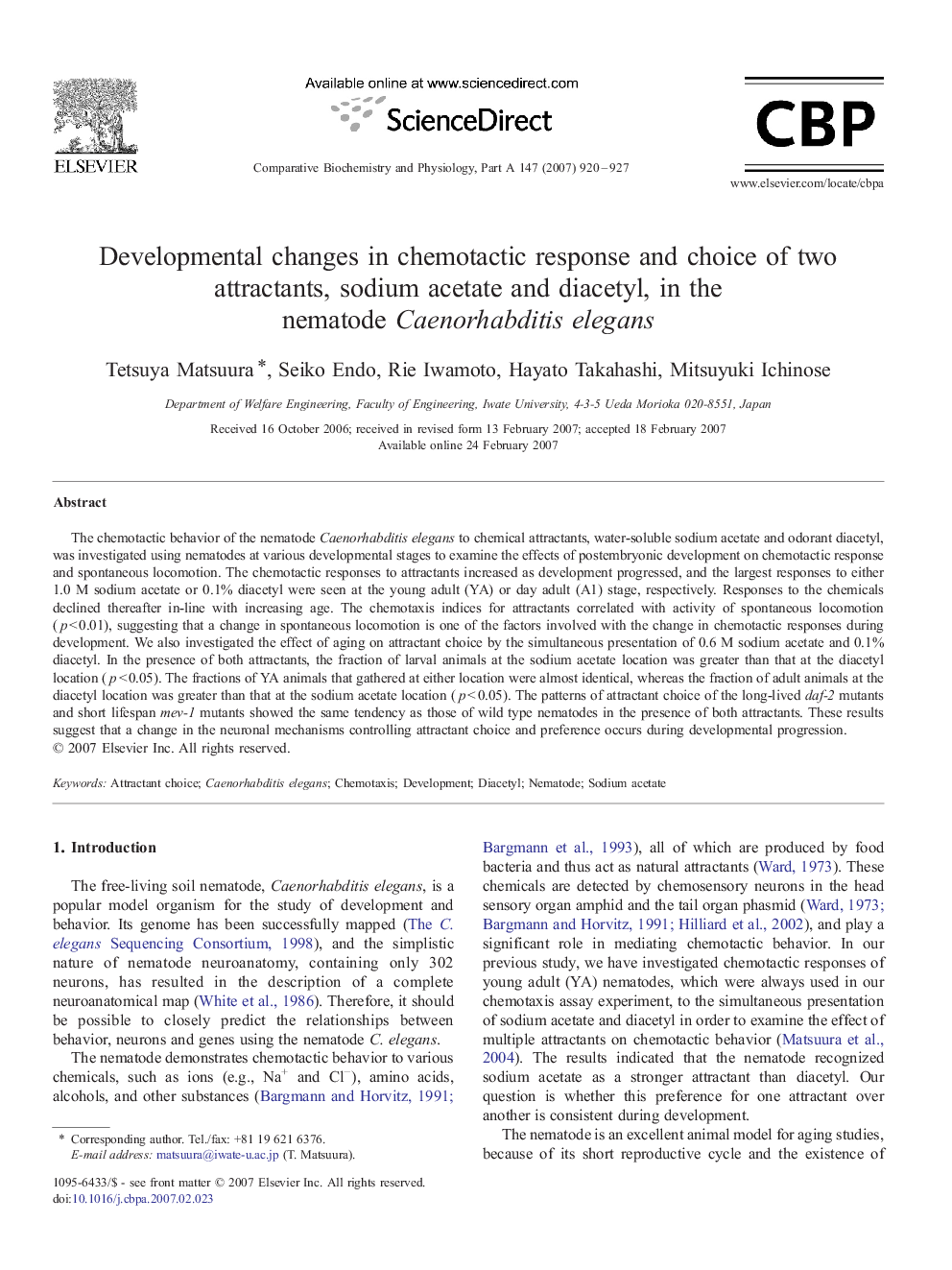| کد مقاله | کد نشریه | سال انتشار | مقاله انگلیسی | نسخه تمام متن |
|---|---|---|---|---|
| 1974784 | 1060381 | 2007 | 8 صفحه PDF | دانلود رایگان |

The chemotactic behavior of the nematode Caenorhabditis elegans to chemical attractants, water-soluble sodium acetate and odorant diacetyl, was investigated using nematodes at various developmental stages to examine the effects of postembryonic development on chemotactic response and spontaneous locomotion. The chemotactic responses to attractants increased as development progressed, and the largest responses to either 1.0 M sodium acetate or 0.1% diacetyl were seen at the young adult (YA) or day adult (A1) stage, respectively. Responses to the chemicals declined thereafter in-line with increasing age. The chemotaxis indices for attractants correlated with activity of spontaneous locomotion (p < 0.01), suggesting that a change in spontaneous locomotion is one of the factors involved with the change in chemotactic responses during development. We also investigated the effect of aging on attractant choice by the simultaneous presentation of 0.6 M sodium acetate and 0.1% diacetyl. In the presence of both attractants, the fraction of larval animals at the sodium acetate location was greater than that at the diacetyl location (p < 0.05). The fractions of YA animals that gathered at either location were almost identical, whereas the fraction of adult animals at the diacetyl location was greater than that at the sodium acetate location (p < 0.05). The patterns of attractant choice of the long-lived daf-2 mutants and short lifespan mev-1 mutants showed the same tendency as those of wild type nematodes in the presence of both attractants. These results suggest that a change in the neuronal mechanisms controlling attractant choice and preference occurs during developmental progression.
Journal: Comparative Biochemistry and Physiology Part A: Molecular & Integrative Physiology - Volume 147, Issue 4, August 2007, Pages 920–927